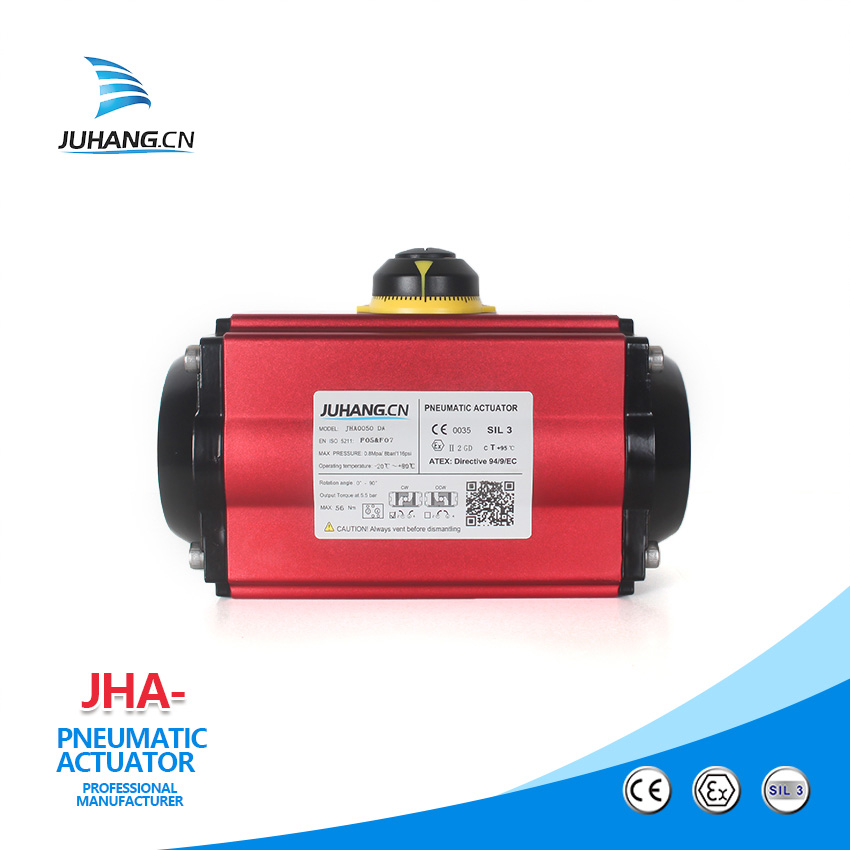Types and selection of
actuators (3)
Actuator Selection Elements
The following factors must be considered when selecting an appropriate valve actuator type and size:
1. Driving energy, the most commonly used driving energy is power supply or fluid source. If the power supply is selected as the driving energy, three-phase power supply is generally used for large-sized valves, and single-phase power supply is selected for small-sized valves. Generally, electric actuators can have a variety of power supply types to choose from. DC power supply is sometimes optional, in which case power fail-safe operation can be achieved by installing batteries.
There are many types of fluid sources. First, they can be different media such as compressed air, nitrogen, natural gas, hydraulic fluid, etc. Second, they can have various pressures. Third, the
actuators have various sizes to provide output force and torque.
2. Valve type, when choosing an actuator for a valve, you must know the type of valve, so that you can choose the correct type of actuator. Some valves require multi-turn drives, some require single-turn drives, and some require reciprocating drives, which affect the choice of actuator type. Usually multi-turn pneumatic
actuators are more expensive than electric multi-turn actuators, but the price of reciprocating linear output pneumatic actuators is cheaper than electric multi-turn actuators.
3. Torque size
For valves with 90-degree rotation, such as ball valves, butterfly valves, and plug valves, it is best to obtain the corresponding valve torque from the valve manufacturer. Most valve manufacturers test the operating torque required by the valve under rated pressure. torque provided to customers. For multi-turn valves, the situation is different. These valves can be divided into: reciprocating (lifting) movement - the valve stem does not rotate, reciprocating movement - the valve stem rotates, non-reciprocating - the valve stem rotates, and the valve stem must be measured. Diameter, stem connection thread size determines the size of the actuator.
4. Selection of the actuator.
Once the type of actuator and the required drive torque for the valve are determined, the data sheet or selection software provided by the actuator manufacturer can be used for selection. Sometimes the speed and frequency of valve operation also need to be considered. Fluid-driven
actuators have adjustable stroke speed, but electric
actuators with three-phase power only have a fixed stroke time.
Some small-sized DC electric single-turn actuators can adjust the stroke speed.
The biggest advantage of the automatic control valve is that the valve can be operated remotely, which means that the operator can sit in the control room to control the production process without having to go to the site to manually open and close the valve. People only need to lay some pipelines to connect the control room and the actuator, and the driving energy directly excites the electric or pneumatic actuator through the pipeline.
If the actuator is required to control parameters such as liquid level, flow or pressure of the process system, this is a job that requires the actuator to act frequently, and the 4-20mA signal can be used as the control signal, however this signal may be as frequent as the process. Change. If an actuator with very high frequency action is required, only a special regulating actuator that can be started and stopped frequently is selected. When multiple
actuators are required in a process, each actuator can be connected by using a digital communication system, which can greatly reduce installation costs. Digital communication loops can transmit instructions and collect information quickly and efficiently. At present, there are various communication methods such as: FOUNDATION FIELDBUS, PROFIBUS, DEVICENET, HART and PAKSCAN specially designed for valve actuators. Not only do digital communication systems reduce capital costs, they can also collect a wealth of valve information that is valuable for predictive valve maintenance programs.
predictive maintenance
The operator can use the built-in data memory to record the data measured by the torque sensing device every time the valve moves. These data can be used to monitor the operating status of the valve, prompt whether the valve needs maintenance, or use these data to diagnose the valve.
The following data can be diagnosed for the valve:
1. Valve seal or packing friction
2. Friction torque of valve stem and valve bearing
3. Valve seat friction
4. Friction during valve operation
5. The dynamic force of the valve core
6. Stem thread friction
7. Valve stem position

